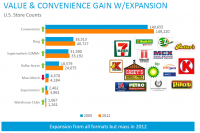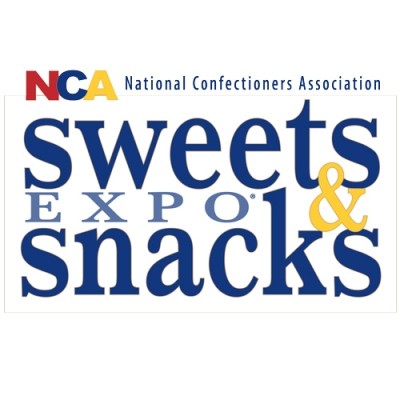C-stores and value retailers the winning channels for confectionery

Speaking at the NCA State of the Industry Conference earlier this month, Todd Hale, senior vice president of consumer and shopper insights at Nielsen said the US candy industry grew to $32.7bn in 2012.
“The growth is really coming from value and convenience,” he said.
Overall C-Stores sales increased 4.9% in 2012 compared to the previous year, while candy sales in c-stores were up 8.3%.
Over the same period, supermarket sales grew just 0.2%, with candy growth in the channel up 2.3%.
Store expansion fuelling growth
“The growth [in C-store and value retail] is being fuelled by store expansion,” said Hale.
The number of C-stores in the US rose from 140,655 in 2005 to 149,220 in 2012 with retailers such as 7-Eleven and Kwik Fill expanding their footprints, according to Nielsen data.
Confectionery is the fifth bestselling category in C-stores, accounting for 4.3% of total sales. By comparison, confectionery is only the sixteenth bestselling category in supermarkets with a 1.8% share.
The number of dollars stores has also risen from 18,579 in 2005 to 24,075 in 2012 driven by expansions from the likes of Walmart, Dollar General and Bottom Dollar Food.
Consumers changing purchasing habits
“What’s on the mind of consumers today is vale and saving money,” said Hale.
An NCA Custom Shopper Panel Survey from January found that 28% of consumers had changed confections purchases because of the economy. Over half of those who changed their habits said they were eating confectionery less often, but 27% said they had switched to value channels and 30% said they were buying cheaper products.
In this environment, one might suspect that private label was excelling, but it is not growing as much as you’d imagine, said Hale.
Private label threat?
Private label is a much bigger threat in other categories, but only holds a small share in confectionery.
Between 2009 and 2012, private brand confectionery grew 11%, the same rate as branded confections, while private label brands across all categories grew 15.5%.
Over this period, private label confectionery share was held at 3.8%, while private label gained one share point to 17% across all categories.
Larry Wilson, vice president of consumer relations at the NCA, said private brands were starting to act like brands in their own right.
Confectioners should concentrate on improving the value and quality of products or risk losing share, he said.









